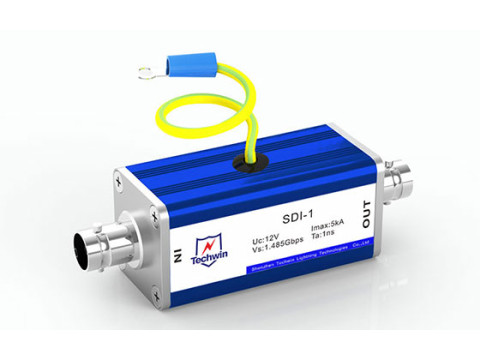Protection of Video Surveillance Systems from Induced Voltages
While this article primarily focuses on outdoor video surveillance, it’s important to note that electromagnetic interference (EMI) can also affect equipment installed indoors.
Therefore, when dealing with potential sources of induced dangerous voltages, it’s crucial to consider protection for both outdoor and indoor surveillance systems.
Sources of Induced Dangerous Voltages
The main causes of induced voltages that could affect surveillance systems include:
- High-voltage power lines and electrical transport contact networks.
- High-power radio frequency transmission (radiating) installations.
- Powerful electrical equipment, such as welding machines.
- Atmospheric electricity, which, by the way, can generate induced voltages more powerful than all of the above sources combined.
The components most vulnerable to induced dangerous voltages are long connecting lines, including both signal transmission cables and power circuits (not only low-voltage but also 220V power lines, particularly aerial ones designed for surveillance systems). Even Power over Ethernet (PoE) connections are not immune.
Implementing Protection for Surveillance Systems
Protection must be installed on each of these lines, ideally at both the beginning and the end of each line (see illustration).
Equipment and Types of Protection
Today, there are many ready-made protective devices available. Some types of surveillance equipment, such as twisted-pair signal transmitters, may have built-in protection.
However, let’s focus on the key principles of protection and common configurations.
Key Characteristics of Induced Electromotive Force (EMF)
The primary characteristics of induced EMF interference are the rate of voltage rise and the voltage level itself.
For example, a lightning strike can induce voltages of several kilovolts within a time frame measured in tens of microseconds.
Protection Principle
Naturally, a single protective device is not sufficient to provide complete protection, so it’s advisable to implement multi-stage protection.
First Line of Defense: A gas discharge tube is used, which has a specific breakdown voltage. Excess voltage is diverted to the ground.
However, the voltage is limited to a relatively high level, which means that a second stage of protection is necessary. This stage often uses clamping diodes or Zener diodes and should be connected through a current-limiting element such as an inductor or resistor.
Second Stage: Similar to the second stage described above, but could include additional protective measures.
In some cases, a third stage of protection is required, which is similar to the second one in principle.
It’s important to note that most of the protective devices available on the market today are rated as Class III devices, meaning they provide protection from residual voltage spikes but are generally ineffective against direct lightning strikes or powerful switching surges.
Unfortunately, Class I and Class II protection, which would provide a higher level of defense, is typically implemented during the design and construction phases of buildings, infrastructure, and electrical networks. Ideally, this protection should be present at every facility.
Class III Protection
Devices classified as Class III are characterized by specific values for impulse voltage and current, along with a standardized time frame for the impulse. These devices provide effective protection against smaller voltage spikes, ensuring the overall safety of the surveillance system against less severe electrical disturbances.

